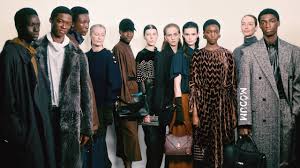The global luxury fashion industry is entering a period of creative transformation as major houses — including Dior, Gucci, and Chanel — usher in new design leadership to rejuvenate their brands amid softening sales and evolving consumer tastes.
Luxury’s Creative Reset
After years of relying on heritage aesthetics and celebrity collaborations, the industry’s most established names are embracing bold new directions to recapture cultural relevance. The shift comes as post-pandemic luxury spending slows, and high-end shoppers — especially younger, digitally native audiences — demand authenticity, innovation, and purpose over mere prestige.
Gucci Embraces Minimalism
At Gucci, the appointment of a new creative director marks a pivotal strategic reset following a period of brand fatigue. The label is steering away from its once-maximalist aesthetic toward a more minimalist, contemporary style — signaling a refined evolution of its creative identity.
Dior and Chanel Reimagine Tradition
Dior is reportedly reworking its runway identity by merging its heritage couture sensibility with narratives of modern empowerment. Meanwhile, Chanel faces growing pressure to adapt after recent collections drew mixed reviews, with critics urging greater innovation to connect with younger audiences.
New Leadership, New Luxury
Industry analysts say this wave of creative restructuring reflects the broader challenges facing the luxury sector — from sustainability demands and social media shifts to changing global economics. The next generation of designers is expected to balance artistry with business acumen, crafting collections that honor legacy while pushing creative boundaries.
Redefining Fashion’s Future
As Dior, Gucci, and Chanel lead this creative evolution, the fashion world is watching closely. Their success could redefine what luxury represents in 2025 and beyond — not just as a symbol of wealth, but as a reflection of culture, creativity, and conscious innovation.

